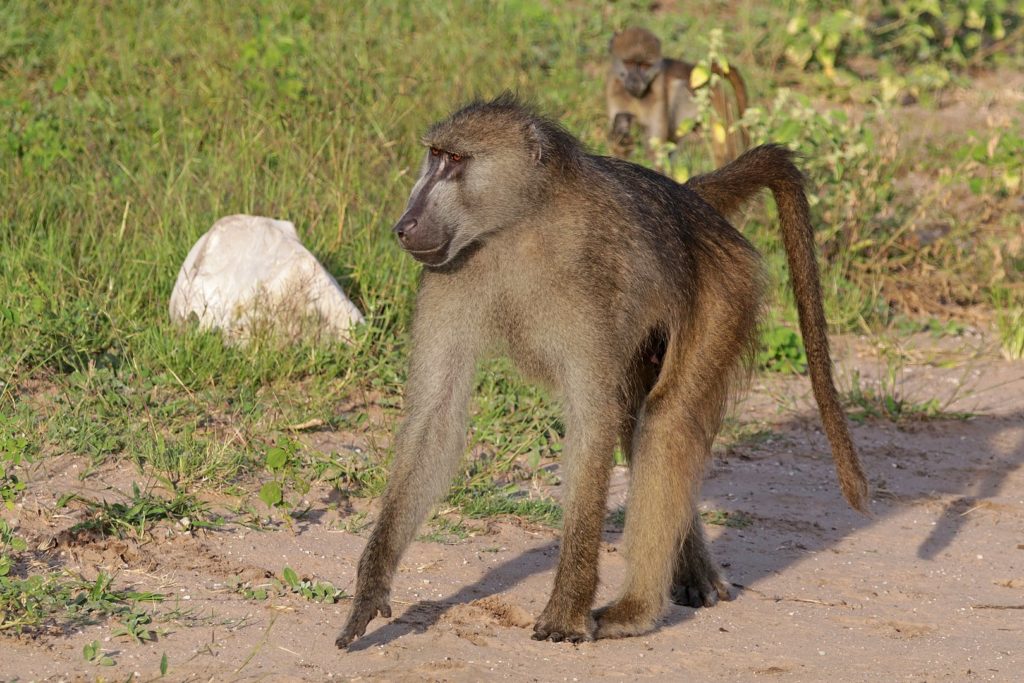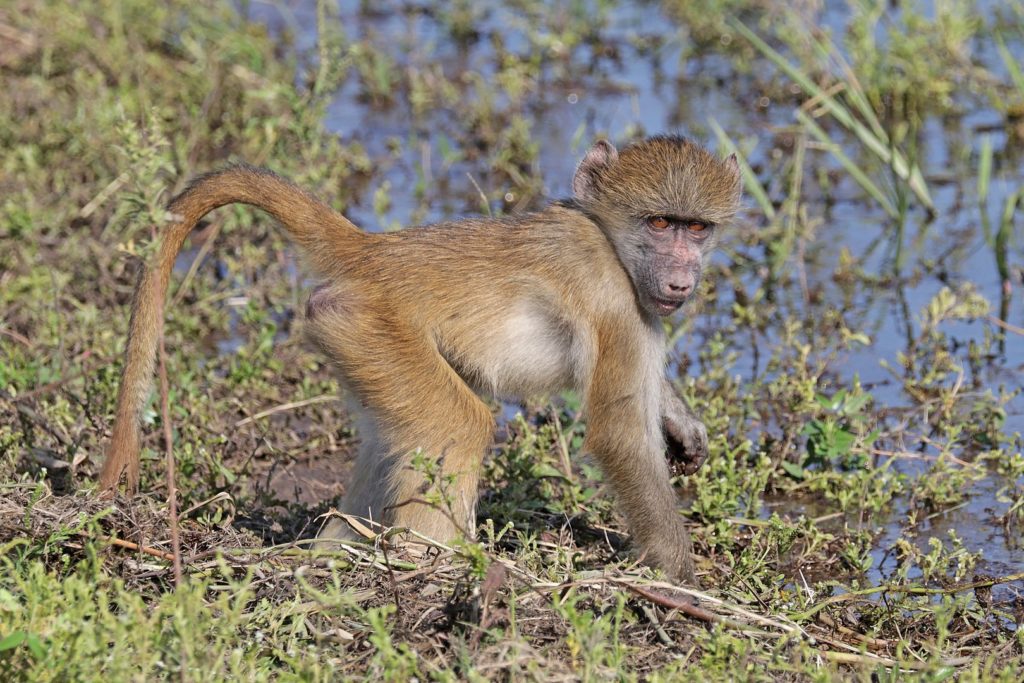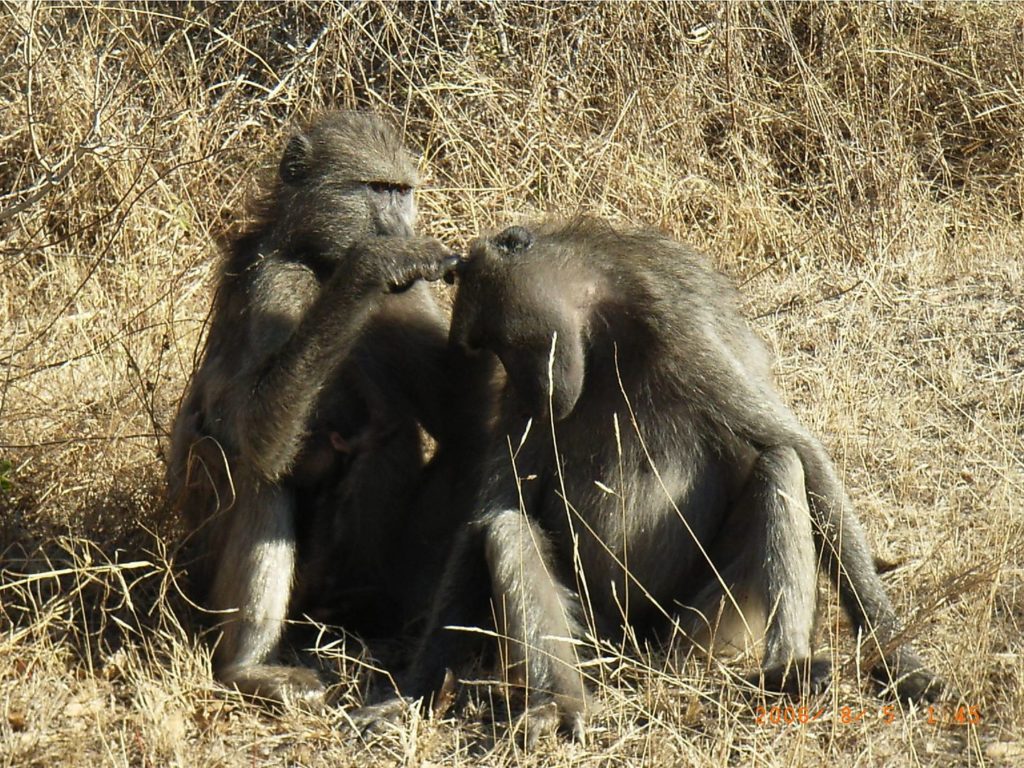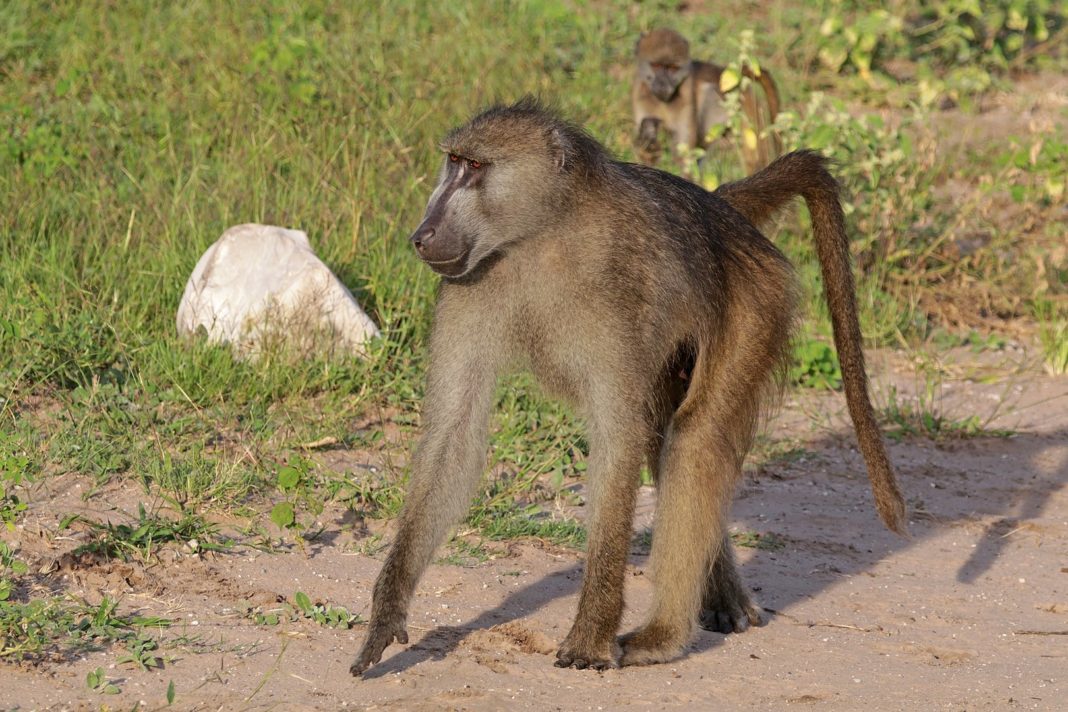The chacma baboon (Papio ursinus), also known as the Cape baboon, is, like all other baboons, from the Old World monkey family. It is one of the largest of all monkeys. Located primarily in southern Africa, the chacma baboon has a wide variety of social behaviors, including a dominant hierarchy, collective foraging, adoption of young by females, and friendship pairings.

These behaviors form parts of a complex evolutionary ecology. In general, the species is not threatened, but human population pressure has increased contact between humans and baboons. Hunting, trapping, and accidents kill or remove many baboons from the wild, thereby reducing baboon numbers and disrupting their social structure.
The adult males of chacma baboon can attain a body length of 115 cm, a tail length of up to 84 cm, and an average of 30 kg (but can attain a maximum weight of 40 kg), although females are only around half as heavy as this. Although predominantly native to South Africa, certain subspecies of chacma baboon also occur in Zambia, Namibia, Angola, Mozambique, Botswana, and Zimbabwe.

This species is physically noted for its very long, downward-sloping face, and for its very sizeable canine teeth, which have a mean length of approximately 4 cm at their greatest length, i.e., before they become worn down as the baboons grow older and leave the troop in which they were born.

The chacma baboon is widespread and does not rank among threatened animal species. However, in some confined locations, such as South Africa’s Southern Cape Peninsula, local populations are dwindling due to habitat loss and predation from other protected species, such as leopards and lions. Many troops have become a suburban menace in their search for food, overturning garbage cans, and literally breaking into cars and houses where they cause much damage. These troops can be dangerous and aggressive, and they will even steal food directly from people.
According to Wikipedia















